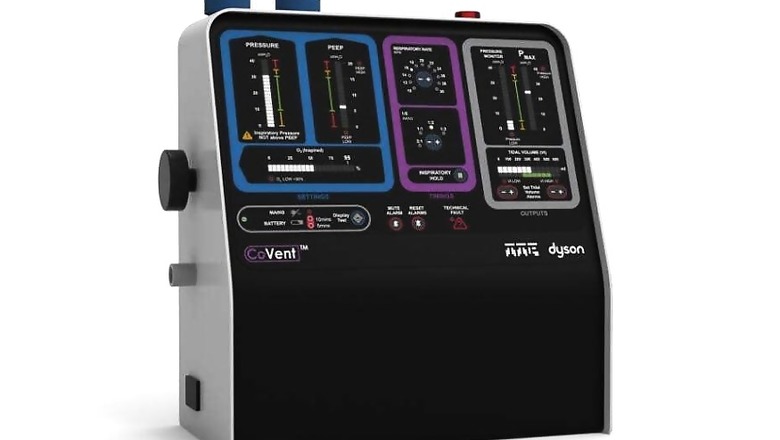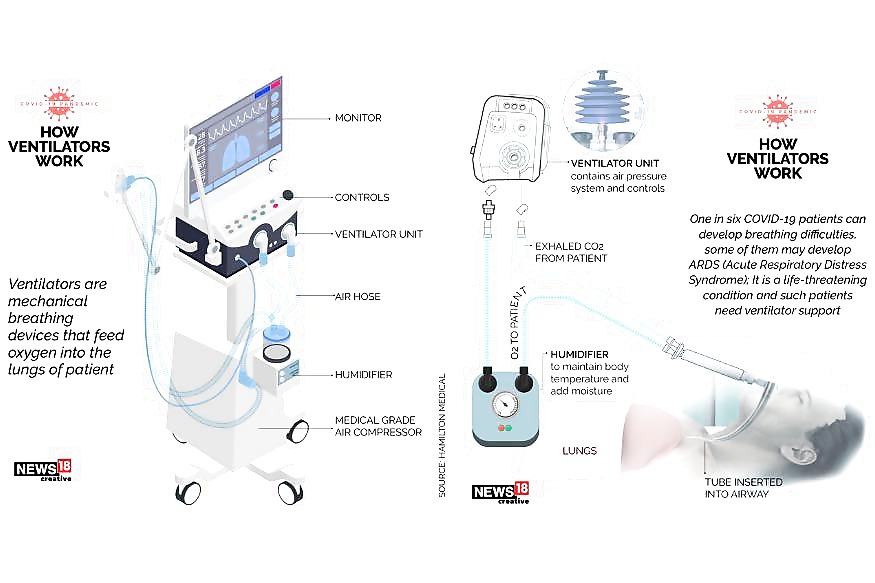
views
There is a pretty intense conversation happening around the world about the shortage of ventilators. You may have heard about it on social media, on TV and perhaps even on WhatsApp groups. The situation is that health authorities around the world are trying to find ways to at least minimize the massive shortfall as there is tremendous pressure on hospitals to have ventilators available for patients with severe cases of Coronavirus, or COVID. Countries with the highest number of confirmed Coronavirus cases, including the US and Italy, are struggling to keep the flow of supplies for medical and protective equipment coming in for the health workers on the frontlines in hospitals, as they deal with patients suffering from this very infectious illness. One of these medical devices is the ventilator, which is crucial for patients who may have acute COVID infection. After all, a lot of COVID patients develop breathing difficulties, because this virus hits the human respiratory system. Pneumonia is one of the fallouts of the Coronavirus, in some patients. "Most people infected with the COVID-19 virus will experience mild to moderate respiratory illness and recover without requiring special treatment. Older people, and those with underlying medical problems like cardiovascular disease, diabetes, chronic respiratory disease, and cancer are more likely to develop serious illness," says the World Health Organization (WHO).
In India, the Defense Research and Development Organization (DRDO) is working on a ventilator design that allows several patients to be supported on a single ventilator. The government has already reached out to car makers including Maruti Suzuki India, Hyundai Motor India, Mahindra & Mahindra as well as Tata Motors and Honda Cars India Ltd to utilize their vehicle manufacturing capacity to make ventilators for use in hospitals. The fear is that if India does move to Stage 3, which refers to large scale community spread, then India would also face a severe shortfall of ventilators. That is perhaps the reason why the government is preparing these medical devices well in advance to be prepared for such an outcome.

What are ventilators?
A ventilator is designed to assist a human in breathing when the lungs become too weak to be able to breathe on their own. A ventilator’s assistance allows the patient’s body some time to heal. There are two types of ventilators that are used in hospitals, depending on the severity of each case.
“A ventilator supports a patient who is no longer able to maintain their own airways, but sadly there is currently a significant shortage, both in the UK and other countries around the world,” wrote James Dyson, the founder of Dyson, in a letter to the employees. Dyson will be supplying as many as 10,000 ventilators to the UK government to help the National Health Service (NHS) treat coronavirus patients. Dyson is calling this new ventilator CoVent and is designed keeping in mind the efficiencies in conserving oxygen, should be easy to use, a bed-mountable design, portable and should not need a fixed air supply. This will also use the Dyson Digital Motor, a re-engineered version of it, which is also seen in Dyson’s very precise and powerful vacuum cleaners, for instance.
The mechanical ventilator unit has air pressure controls as well as a humidifier to match the air to body temperature and add moisture. There is a tube inserted into the patient’s airway which then supplies the oxygen and flows out the carbon dioxide. Then there is the simpler non-invasive ventilator which is basically a face mask fitted over the nose and mouth for assisted breathing. There is no tube inserted into the airway, in this case, and these masks can help push air for assisting with the breathing.
Before doctors put a patient on a ventilator, they look for signs of respiratory failure or respiratory distress. These usually include and increased breathing rate and higher CO2 in the blood.
There is no hard and fast rule on how long a patient might need a ventilator for—it could be for short periods to help with the breathing or even for weeks in acute cases.
What is the plan to overcome the shortage?
Globally, corporates are pitching in to help meet the rapidly increasing demand for ventilators. But there could still be some delay because medical and regulatory approvals will still have to be sought—though one expects these will be pushed through on an urgent basis in this scenario.
In addition to Dyson pitching in with 10,000 ventilators, Gtech, a UK based electronics company, is also working to produce ventilators and has also submitted two units to the government. Gtech makes cordless vacuum cleaners and garden power tools.
Jack Ma Foundation and Alibaba Foundation, over the weekend, announced they will be donating as many as 1.7 million face masks, 165,000 test kits as well as protective clothing and medical equipment such as ventilators and forehead thermometers in India, Azerbaijan, Bhutan, Kazakhstan, Kyrgyzstan, Uzbekistan and Vietnam. The Jack Ma Foundation has already announced multiple such initiatives in Asia, North America, Latin America, Europe and Africa, in an attempt to fight the COVID-19 pandemic.
In the US, the Ford Motor Company is working with General Electric Co. (GE) and 3M to build ventilators for use in hospitals, as the cases of Coronavirus rise in the country. Ford is looking at how it might produce these new-generation powered air-purifying respirator (PAPRs) in one of its Michigan manufacturing facilities, helping 3M boost production potentially tenfold. “Working with 3M and GE, we have empowered our teams of engineers and designers to be scrappy and creative to quickly help scale up production of this vital equipment. We’ve been in regular dialogue with federal, state and local officials to understand the areas of greatest needs. We are focusing our efforts to help increase the supply of respirators, face shields and ventilators that can help assist health care workers, first responders, critical workers as well as those who have been infected by the virus,” says said Jim Hackett, Ford’s president and CEO, in an official statement. In addition, Ford and GE Healthcare are working together to expand production of a simplified version of GE Healthcare’s existing ventilator design to support patients with respiratory failure or difficulty breathing caused by COVID-19.
But is it enough?
German company Drägerwerk, one of the world’s largest ventilator manufacturers, has warned that the global demand for helping severely ill coronavirus patients will still be higher than the supply, in spite of efforts to quadruple production this year. “The largest part of production capacity for ventilators is in Europe, while the biggest problem appears to be in the US. That is something that concerns me,” Stefan Dräger, CEO, told FT. The German government placed an order for 10,000 ventilators from Drägerwerk this month.















Comments
0 comment